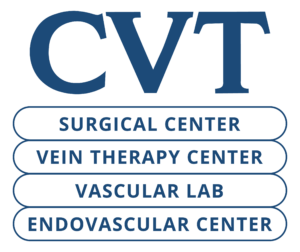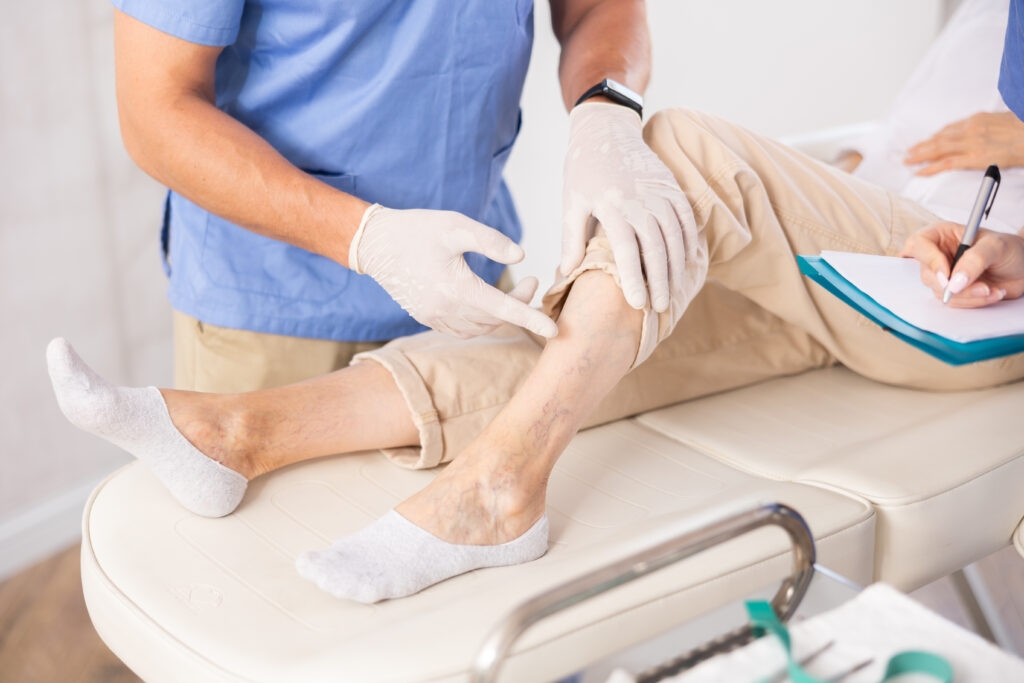Varicose veins, spider veins, and other venous diseases can cause discomfort, swelling,and even more serious health complications if left untreated. Fortunately, minimally invasive vein treatments provide effective relief with little to no downtime. But how do you know if you’re a good candidate for these procedures?
Signs You May Need Vein Treatment
If you experience any of the following symptoms, you might benefit from a minimally invasive vein procedure:
- Visible varicose or spider veins – Bulging, twisted veins, or small red and blue veins on the legs.
- Leg pain or aching – A heavy, tired feeling in your legs, especially after long periods of standing.
- Swelling in the lower legs and ankles – Fluid buildup caused by poor circulation.
- Itching or burning sensations – Discomfort around the affected veins.
- Skin changes – Darkening, hardening, or ulceration of the skin near the veins.
Schedule a Consultation with CVT
Who is a Good Candidate for Minimally Invasive Vein Treatment?
Not everyone needs vein treatment, but the ideal candidates are:
- People experiencing discomfort, swelling, or pain from varicose veins.
- Those with visible veins that affect their confidence or quality of life.
- Patients with no severe underlying medical conditions that would interfere with healing.
- Individuals who are not pregnant, as vein conditions often improve after pregnancy.
- Those who have tried lifestyle changes (exercise, compression stockings) with little improvement.
Why Choose Minimally Invasive Treatments?
In the past, vein treatment often required invasive surgery with long recovery times. Today, modern minimally invasive procedures provide effective results with far less discomfort and a quicker return to normal activities. These treatments offer several advantages, including shorter recovery periods, reduced pain, and minimal scarring. For many patients, these procedures mean getting back to daily life without the burden of persistent leg pain, swelling, or cosmetic concerns.
Procedures to Treat Venous Disease
1. Sclerotherapy: Sclerotherapy involves injecting a special solution into the affected vein, causing it to collapse and gradually fade. It is one of the most effective treatments for spider veinsand smaller varicose veins.
The procedure typically takes 15 to 30 minutes per session and does not require anesthesia. Multiple sessions may be required to achieve optimal results. Patients can resume normal activities immediately, although compression stockings may be recommended for optimal healing.
2. VenaSeal™: VenaSeal™ is a treatment that uses a medical adhesive to seal off diseased veins. Once the vein is closed, blood naturally reroutes to healthier veins. This procedure is approved to treat venous insufficiency, a condition that can result from damaged valves in the veins of your legs, allowing blood to flow in the wrong direction.
Unlike some other treatments, VenaSeal™ does not require compression stockings after the procedure.The procedure is quick, typically lasting about 30 to 45 minutes. Most patients experience little to no discomfort and can return to work or daily activities immediately.
3. Radiofrequency Ablation (RFA): Radiofrequency ablation (RFA) is a highly effective treatment for varicose veins. It works by delivering controlled heat energy through a thin catheter to close the vein. Once treated, the body naturally absorbs the collapsed vein over time.
The procedure takes about 45 to 60 minutes and is performed under local anesthesia. Treating large or complex veins with this method can require multiple sessions for the best results. Some patients experience mild bruising or swelling, but most return to normal activities within a day.
4. Microphlebectomy: Microphlebectomy is a procedure designed to remove large varicose veins through tiny incisions. It is often recommended when veins are too large for sclerotherapy but do not require more invasive surgery.
During the procedure, small punctures are made along the affected vein, and the vein is carefully removed. The procedure is performed under local anesthesia and typically takes 30 to 60 minutes. Extensive vein removal may require more than one session or be performed in conjunction with additional procedures. Patients may experience minor bruising, but scarring is minimal. Compression stockings should be worn for 2-3 weeks post-procedure.
How to Choose the Right Vein Treatment in Baton Rouge
Not sure which procedure is right for you? Here’s what to consider:
- Your Symptoms – Do you have pain, swelling, or just cosmetic concerns?
- Vein Size and Location – Some treatments work best for small veins, others for larger ones.
- Treatment and Recovery Time – Different vein treatments vary in procedure length and recovery time. Some require minimal downtime, while others may involve short-term activity restrictions.
Get Expert Vein Treatment in Baton Rouge
If you’re struggling with varicose veins, spider veins, or leg discomfort, minimally invasive treatments can provide relief. CVT’s Vein Therapy Center in Baton Rouge specializes in the evaluation and treatment of venous diseases. Schedule a complimentary consultation today and let one of our vein specialists help you find the best solution for your needs.

